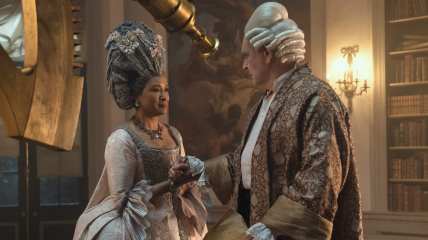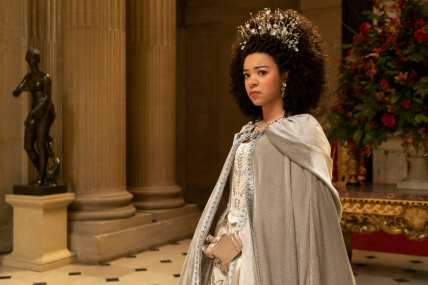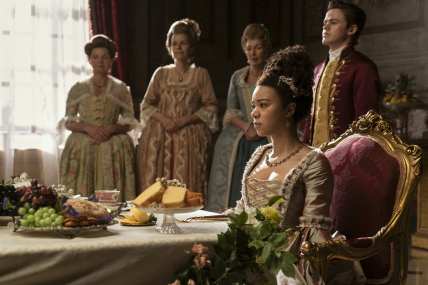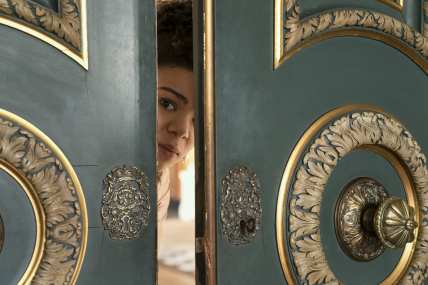Queen Charlotte Season 1, Episode 5 Recap: ‘Let him be mad’
OPINION: A young Lady Danbury finally enjoys a taste of freedom while a Young Queen Charlotte rescues her mentally ill husband from the grips of a doctor who views torture as the best prescription for what ails him.
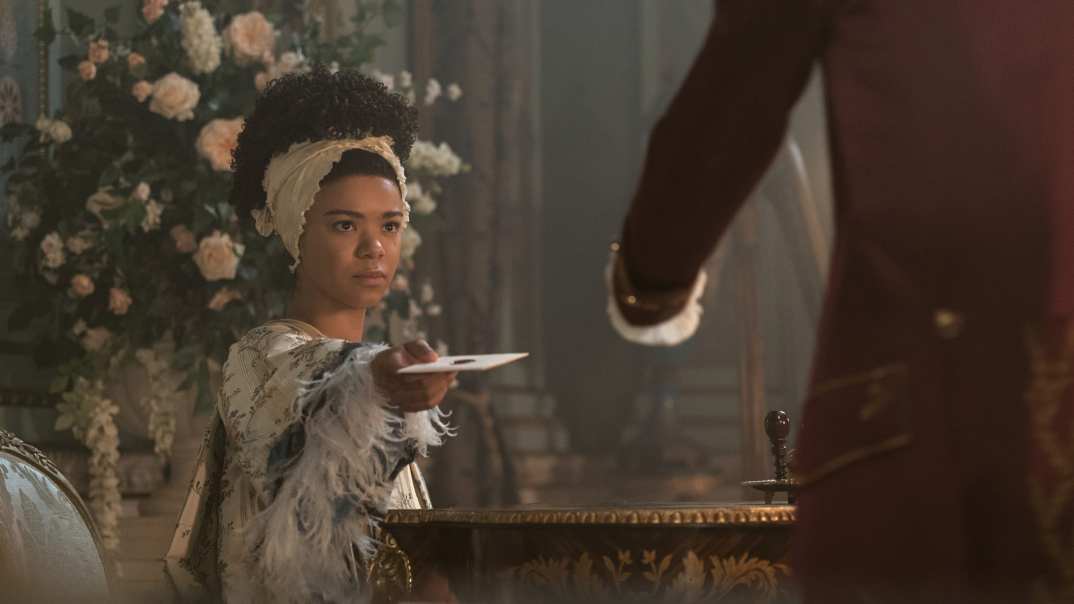
Editor’s note: The following article is an op-ed, and the views expressed are the author’s own. Read more opinions on theGrio.
Everyone is lonely at the beginning of “Queen Charlotte” episode 5, “Gardens in Bloom.” In the “Bridgerton” timeline, the elder version of Queen Charlotte sits alone at a sad aria at the opera.
Lady Danbury and Lady Bridgerton watch her from another booth, recognizing that she must be the loneliest person in all of Britain, and is just as much of a widow as the two of them, even though King George is still alive, though not lucid. All three women go to bed alone but can’t sleep, each haunted by the memories of their husbands.
This is an episode about the prisons that hold each character. Even though Lady Danbury has been free of her husband for decades, she still rushes upstairs to the old room in her estate that she shared with him in her youth, only to trigger a traumatic memory of the horrific way her husband used to use her body for his pleasure. I thought with his death in episode three that we would never have to see those horrible images again, and yet, here we are.
Back in the past, a young King George is being brutally tortured once again, as some evil, ableist “doctor” believes these “treatments” will cure him of his mental illness. Reynolds listens in agony outside the door, unable to intervene on the king’s command. Reynolds tries to give the king a letter from Charlotte, but his torturer won’t let him accept it.
A young Lady Dansbury buries her wretched husband and looks absolutely fabulous in her all-black ‘fit and veil. Death becomes her. Violet Bridgerton’s father, Lord Ledger, is lurking around the funeral, making eyes at the widow.
Apparently, no one gave a damn about Lord Danbury’s death; his own children barely shrugged, as he only saw them a few times a month, for some reason. But for Lady Danbury, mourning is complicated. She shared that her parents promised her to this old man when she was 3 years old and she was raised to be his wife. Her entire personality has been being his wife.
“I was raised for him and now I’m brand new,” she tells her maid. It’s something that she’s always wanted but now isn’t quite sure what to do with it.
She doesn’t get much time to decide that, however, because the newly titled Black members of the Ton are at her doorstep looking to her for leadership in the absence of Lord Danbury due to her being the queen’s favorite. They need to know that Lady Danbury will retain her title and Lord Danbury’s title will pass on to his son so that they’ll know that their titles will also pass on to the next generation, therefore solidifying their families’ futures as members of the Ton.
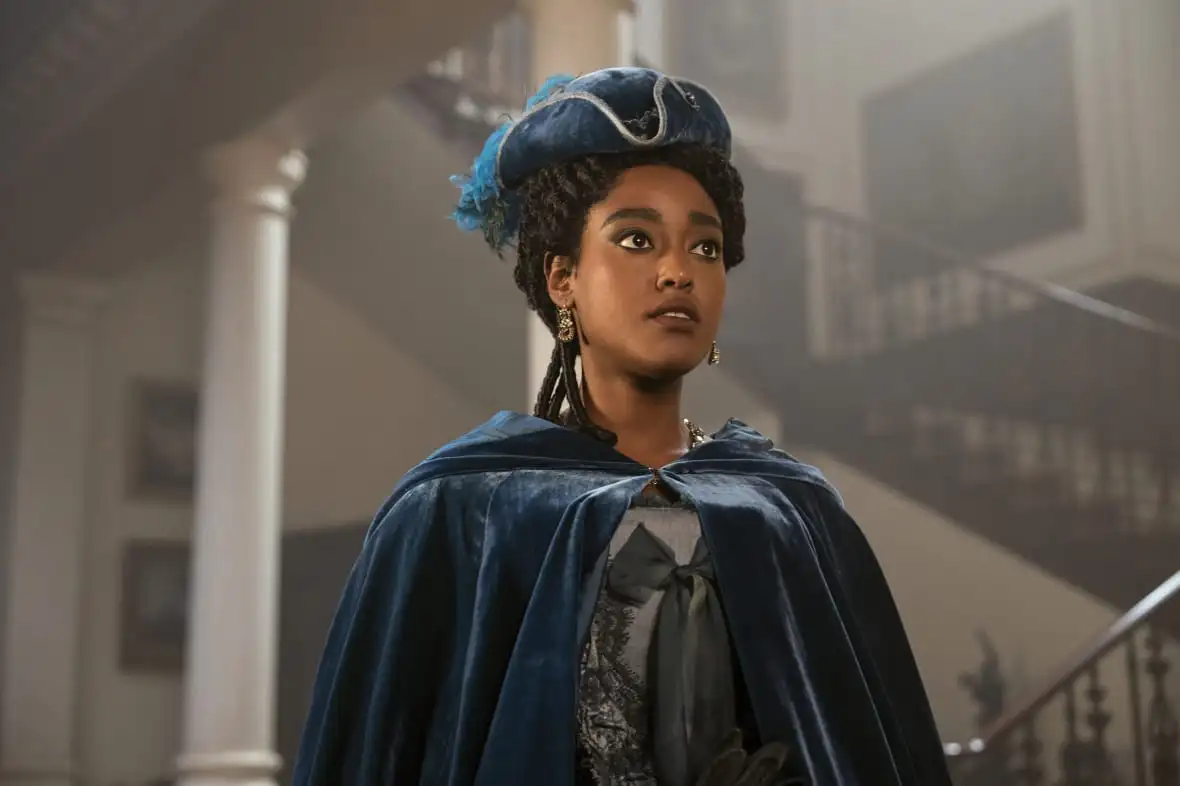
At the same time, the young Queen Charlotte is also being accosted by her mother-in-law, Princess Augusta, who has brought the royal physician and forced Charlotte to be examined. Charlotte’s first pregnancy is confirmed so Augusta will move into Charlotte’s house to monitor her, much to Charlotte’s chagrin. I’m super confused on how a princess trumps a queen, but Charlotte shrinks to this vile woman’s demands.
Even when Charlotte tasks the royal painter with painting her skin darker, “as it actually is,” she’s overruled again by a nosy and bored Augusta who demands that he paint Charlotte’s skin lighter, “pale,” instead. The whitewashing of history never ceases to amaze.
Charlotte is fed up. She writes a final letter, but not to her husband, who has not responded to her pile of letters, but to her brother Adolphus in Germany to come retrieve her. Her bodyman Brimsley meets up with his lover, the king’s bodyman Reynolds, and warns him that this is happening so the king can wake up and fight for her, as Brimsley knows that’s what his queen wants. But Reynolds knows his king is in no state to fight for anything and tells Brimsley to mail the letter.
Lady Danbury goes for a mental health walk and winds up on the abutting estate of Lord Ledger, who invites her on a date. The lady is still in all black, Lord Ledger, have some respect! But she certainly does not seem to mind. She accepts.
Back in the “Bridgerton” present day, grown Queen Charlotte has betrothed two of her sons without their knowledge to two princesses, including Princess Victoria, who I believe is the same Victoria who winds up ruling England for 63 years. But at the moment, Charlotte’s sons are not happy. They bring in their brother, Prince George, who, in King George’s absence, has been declared by Parliament to be the acting sovereign. Charlotte apologizes for overstepping and asks George to approve the marriages, which he quickly does, as that’s all he wanted. The brothers are living but the queen is tickled. Someone had to get the job down, and Charlotte’s tired of waiting for them to grow up.
But speaking of growing, it’s the grownup Violet Bridgerton whose returning sexuality gives the episode its title. She confesses to the grown Lady Danbury that, when Lord Bridgerton died, her “garden” died with him. But lately, her “garden is in bloom,” leading her to open herself up to the possibility of a second chance at love or at least a horny affair. She runs away embarrassed after confessing that, but Lady Danbury meets her again and assures her that it’s all right to feel this way and shares that she did too after her husband finally dies.
What she doesn’t share is that, in her youth, Lady Danbury had an affair with Violet’s father, Lord Ledger, and finally has the kind of passionate sex she never knew existed. But first, back in the past; Lord Ledger and young Lady Danbury go on several walking dates each day and connect emotionally. Shortly after they almost kiss, she learns that her husband may have spent all their money, so if she loses her title and estate due to his death, she’ll also be penniless and forced to marry someone else. It’s nearly unbearable.
Charlotte is also in a state when her brother Adolphus arrives from Germany at his sister’s command. Yet he will not take her back to Germany with him, as there are many political consequences for that. She goes to her only friend, Lady Danbury’s house for refuge. It’s terrifying to Lady Danbury who has already been rebuffed by Princess Augusta refusing to acknowledge her 4-year-old son as the new Lord Danbury. If anything happens to the queen or her unborn child, that would be it for not only the Danburys but also all the Black members of the Ton. While the two ladies in distress have a frank conversation and decide to be each other’s friends, Charlotte’s brother arrives to retrieve her.
Instead of going home to Buckingham House, however, Charlotte goes to her husband’s estate in Kew and demands to see him, despite the “doctor’s” protestations. She sees the king bound and gagged and weeping. She frees him and grounds him back into reality and lucidity. She fires the doctor, who pleads for himself, saying he’s doing this all for the king’s “sanity,” as he’s sure that’s what the queen wants.
Then Queen Charlotte says the most radical and important thing about mental health care that I’ve ever seen on television:
“I care not for his sanity. I care for his happiness. I care for his soul. Let him be mad if mad is what he needs.”
In a world where countless people across generations and thousands of years have had their minds and bodies tortured and forced into ways of being based on what the power structure has determined is “sanity” and “health,” “let him be mad,” is the greatest act of love and humanity a person can express. All hail “Queen Charlotte,” for this brave and revolutionary scene.

Brooke Obie is an award-winning critic, screenwriter and author of the historical novel “Book of Addis: Cradled Embers.”
TheGrio is FREE on your TV via Apple TV, Amazon Fire, Roku, and Android TV. Please download theGrio mobile apps today!
